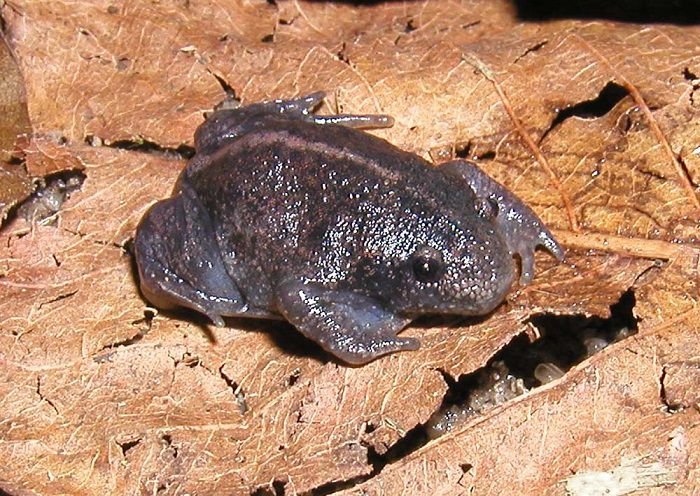Table of Contents
Certain kinds of animals are tougher than others to keep as pets. Toads are one of them. Toads are not impossible to keep, but they do require a lot of care. They are highly sensitive creatures equally capable of thriving and failing to thrive. In the case of the latter, feeding problems are one of the first signs that something is wrong.
When it comes to toads and eating, experienced owners know that they are voracious feeders as juveniles. Toads do not consume as much food as they age, but they still feed regularly. So it can be alarming to notice that your toad is either not eating as much or not eating at all.
Most of the issues related to toad feeding problems can be addressed by answering the following four FAQs frequently posed by concerned pet owners:
1. Why is my toad not eating?
Some species of toads can eat hundreds of insects every day in the wild. Captive toads are unlikely to ever eat that much, but they still have hearty appetites. As such, it is a concern when one does not eat regularly. The unfortunate thing is that there isn’t just one cause. Things to consider are:
are unlikely to ever eat that much, but they still have hearty appetites. As such, it is a concern when one does not eat regularly. The unfortunate thing is that there isn’t just one cause. Things to consider are:
- Calcium Deficiency – A calcium deficiency in young toads may prevent the hind legs from growing properly. If this is the case, a toad might not be able to hunt its prey. Remember that toads are carnivores. They have to go retrieve their food.
- Bacterial Infection – Toads are rather fussy (medically speaking) about their natural environment. For example, toads can develop bacterial infections if the ammonia levels in their tanks are too high. The same is true if nitrates are too high. A bacterial infection can certainly limit a toad’s appetite.
- Intestinal Obstruction – It is not uncommon for toads to accidentally ingest loose gravel in their tanks. Doing so can result in an intestinal obstruction that will inhibit the animal’s ability to feed. Bloating and lethargy are symptoms of intestinal obstruction.
- Vision Problems – Many species of toads rely on visual cues when feeding. While they may not recognize different types of prey, they do recognize moving objects of certain colors. Thus, vision problems could prevent a toad from seeing its food properly.
- A New Environment – Toads sometimes require a few days to get used to a new environment. As such, a recently acquired toad may not know where to find its food. In such a case, you could try holding the food directly in front of the toad so that it doesn’t have to go looking.
A toad suffering from calcium deficiency, bacterial infection, or an intestinal obstruction is best treated by an exotic animal veterinarian. There is little a pet owner can do to solve such problems.
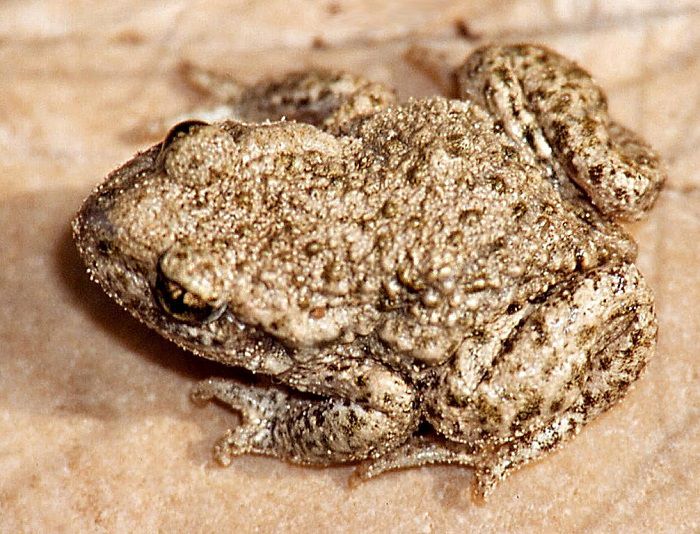
Common Midwife Toad 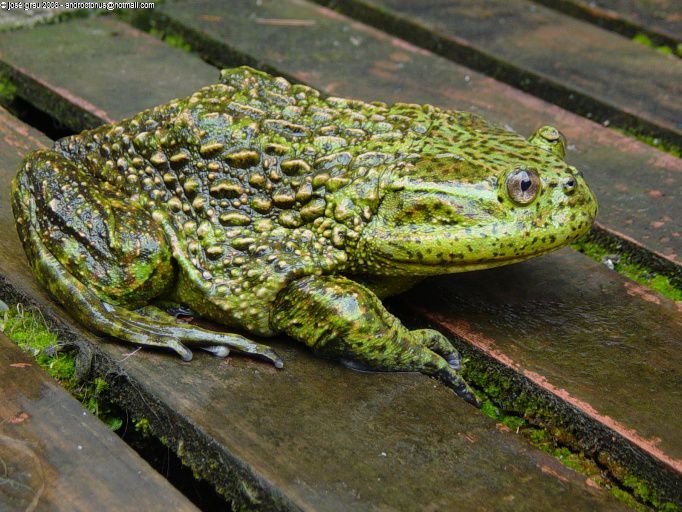
Helmeted Water Toad 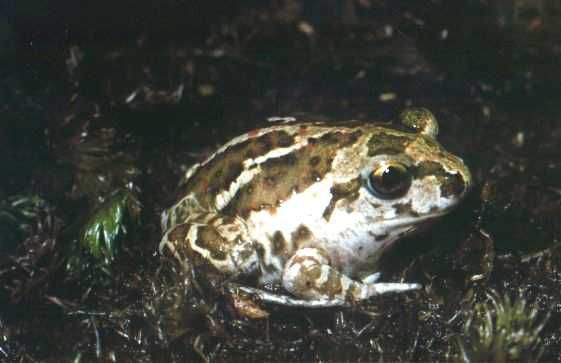
Common Spadefoot Toad
2. Why is my toad skinny?
A toad that isn’t eating properly will lose weight. So with the exception of bloating caused by intestinal obstruction, feeding problems will lead to a skinny toad. The lack of nutrition causes it to lose weight, just as would be the case with any animal.
A skinny toad isn’t necessarily in danger of dying as long as it continues feeding. But if weight loss is combined with a lack of feeding, you probably have a sick toad on your hands. Healthy toads generally have plenty of meat on them.
As a side note, pet owners unfamiliar with how to keep toads sometimes make the mistake of trying to supplement insects and mealworms with things like bananas and leafy vegetables. This is one way to encourage a toad to lose weight. Why? Because toads do not eat vegetation. They are strictly carnivores. Your toad may be skinny because it is not getting enough meat. Meanwhile, it is refusing to eat the fruits and vegetables.
3. How long can a toad go without eating?
There is no need to panic over a toad that hasn’t eaten in a day or two. Technically, adult toads can generally go without eating for up to two weeks. One or two days isn’t cause for alarm. Having said that, juvenile toads will feed every day if they are healthy. They are like human teenagers – they can never get enough! Older adults might only feed every couple of days.
A general rule is to not let a toad go three days without feeding. If you have tried and been unsuccessful in that amount of time, consider one of the potential problems discussed earlier. By day four or five, consider taking your toad to an exotic animal veterinarian.
Bear in mind that feeding frequency can vary depending on species, weight, age, and hibernation status. Just remember there are no hard and fast rules. Healthy toads will feed as frequently as necessary to meet their nutritional needs.
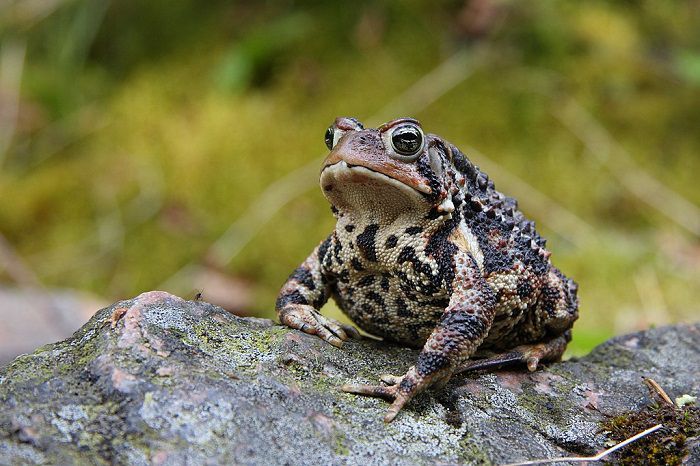
American Toad 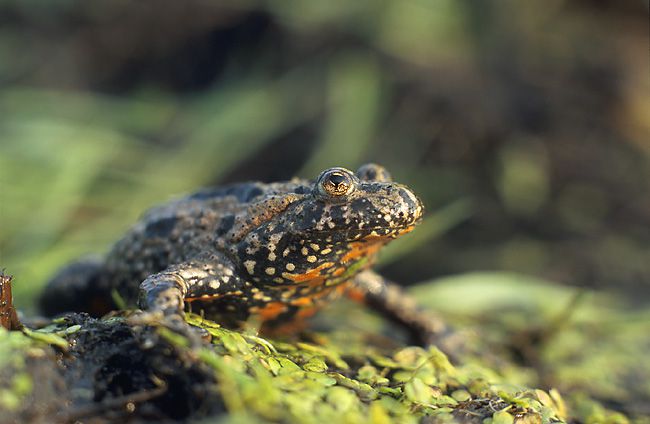
European Fire-Bellied Toad 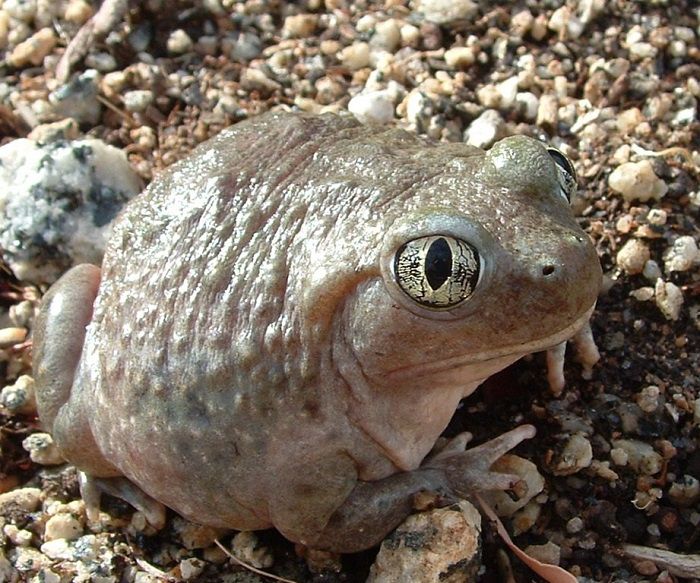
Western Spadefoot Toad
4. How long can a toad go without water?
Despite being amphibians, toads can actually go quite a long time without water. Exactly how long depends on many of the same factors relating to food. A healthy toad of good weight can go weeks without water. Furthermore, healthy toads kept in sufficiently humid environments may barely drink at all. And of course, hibernating toads can go months without water.
The interesting thing is that it is difficult to know whether a toad is drinking or not. Toads are not like dogs in the sense that they go up to a water dish and start lapping up the liquid. They drink while in the water.
Toads can be confusing pets when it comes to feeding. It is not because they are difficult to feed. It’s because their feeding habits are so unusual. Just remember this: a healthy toad is one that is active and alert. It maintains its weight and displays clear eyes and healthy skin.
If you have a toad that seems to be losing weight, look for other signs of sickness or disease. Weight loss combined with a persistent lack of feeding could be a sign of several different problems. If you also notice lethargy, cloudy eyes, bloating, and signs of distressed breathing, it is time to take your beloved pet for veterinary exam.
I have curated some videos featuring pet toads feeding. Enjoy:
Photo Credits:
Featured Image (Mexican Burrowing Toad): Pstevendactylus – CC BY-SA 3.0
Common Midwife Toad: Christian Fischer – CC BY-SA 3.0
– CC BY-SA 3.0
Helmeted Water Toad: José Grau de Puerto Montt – CC BY-SA 3.0
– CC BY-SA 3.0
Common Spadefoot Toad: Franco Andreone – CC BY-SA 2.5
– CC BY-SA 2.5
American Toad: Cephas – CC BY-SA 3.0
– CC BY-SA 3.0
European Fire-Bellied Toad: Marek Szczepanek – CC BY-SA 3.0
– CC BY-SA 3.0
Western Spadefoot Toad: Takwish – CC BY-SA 2.5
– CC BY-SA 2.5

